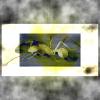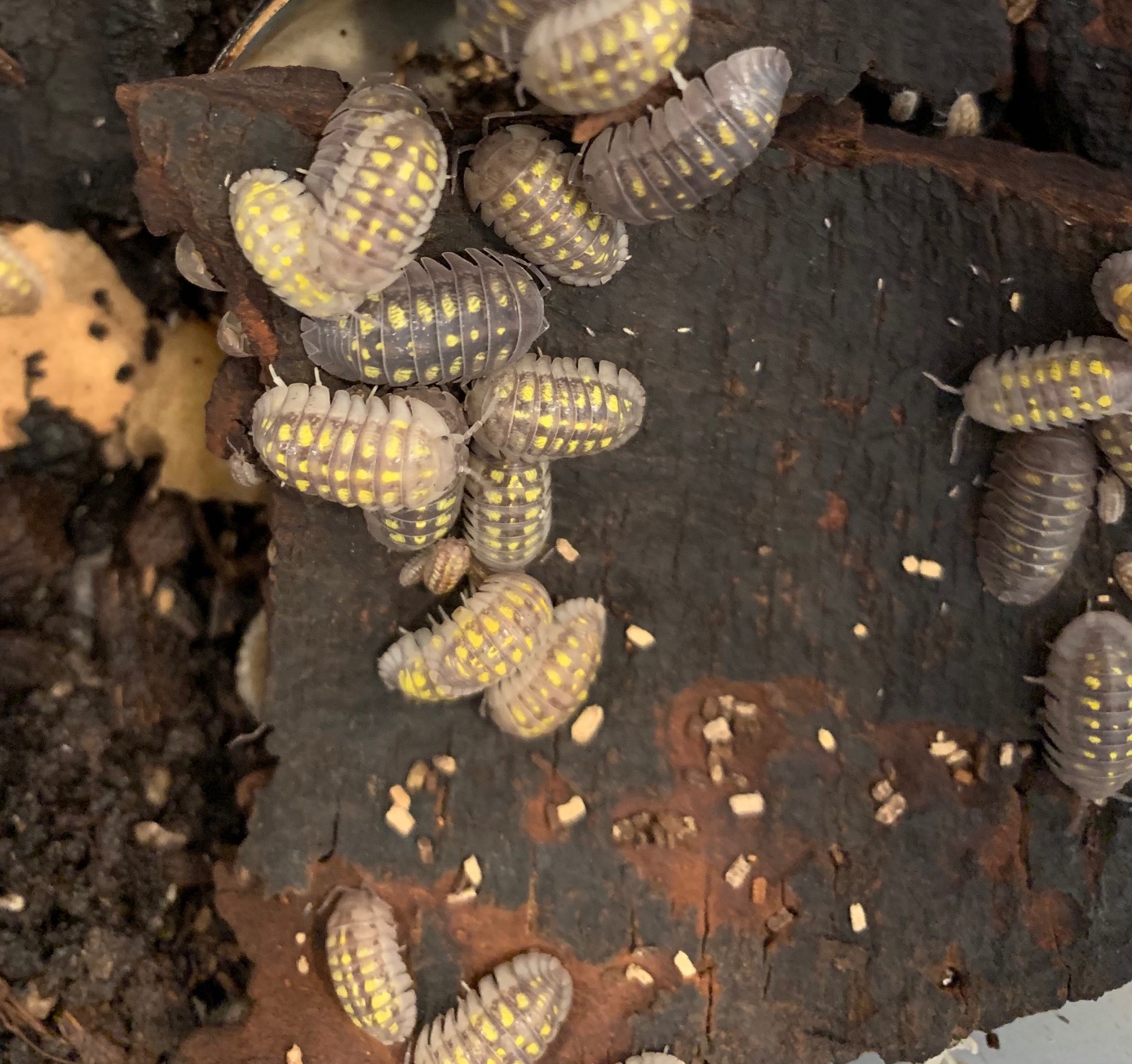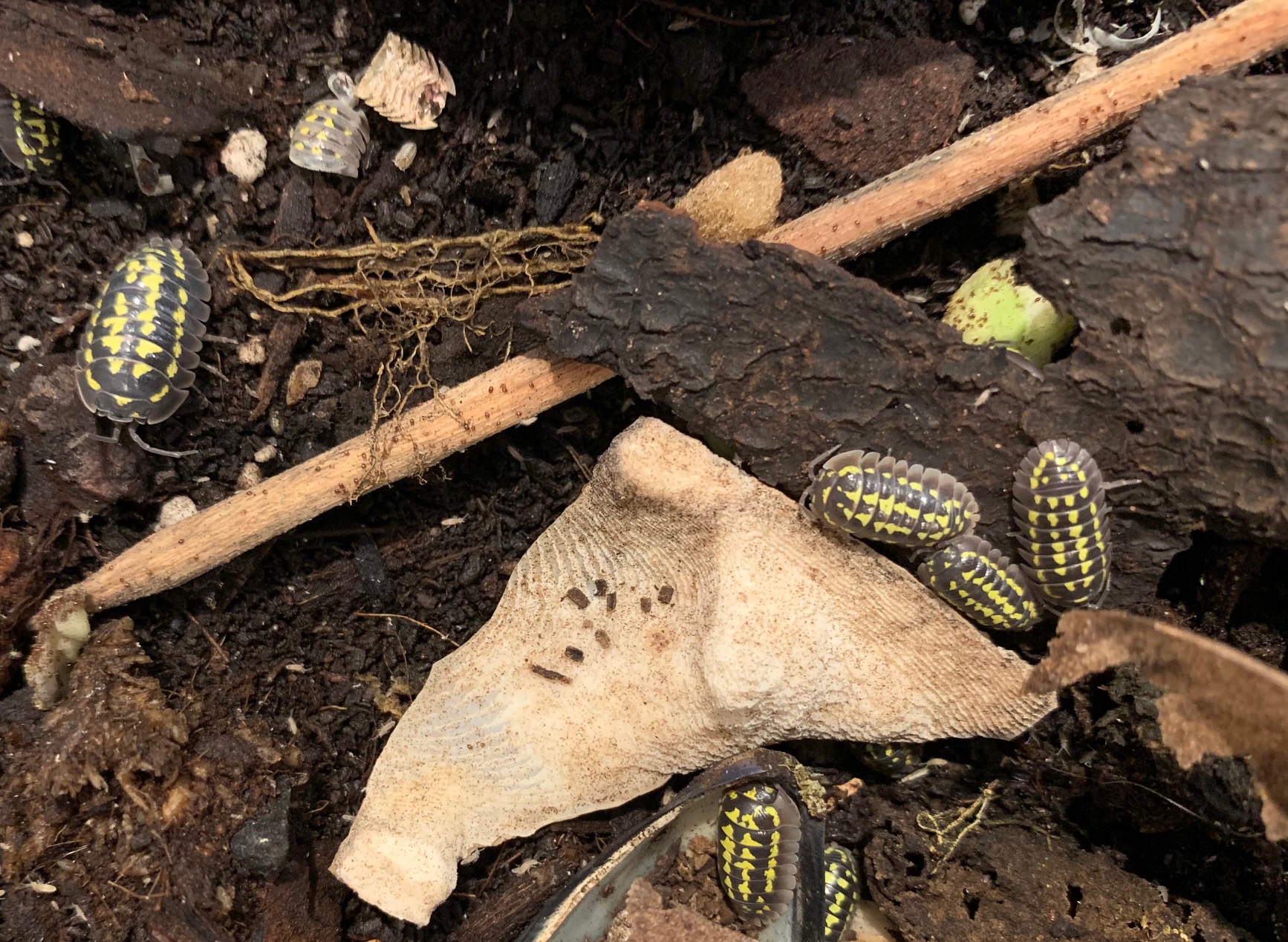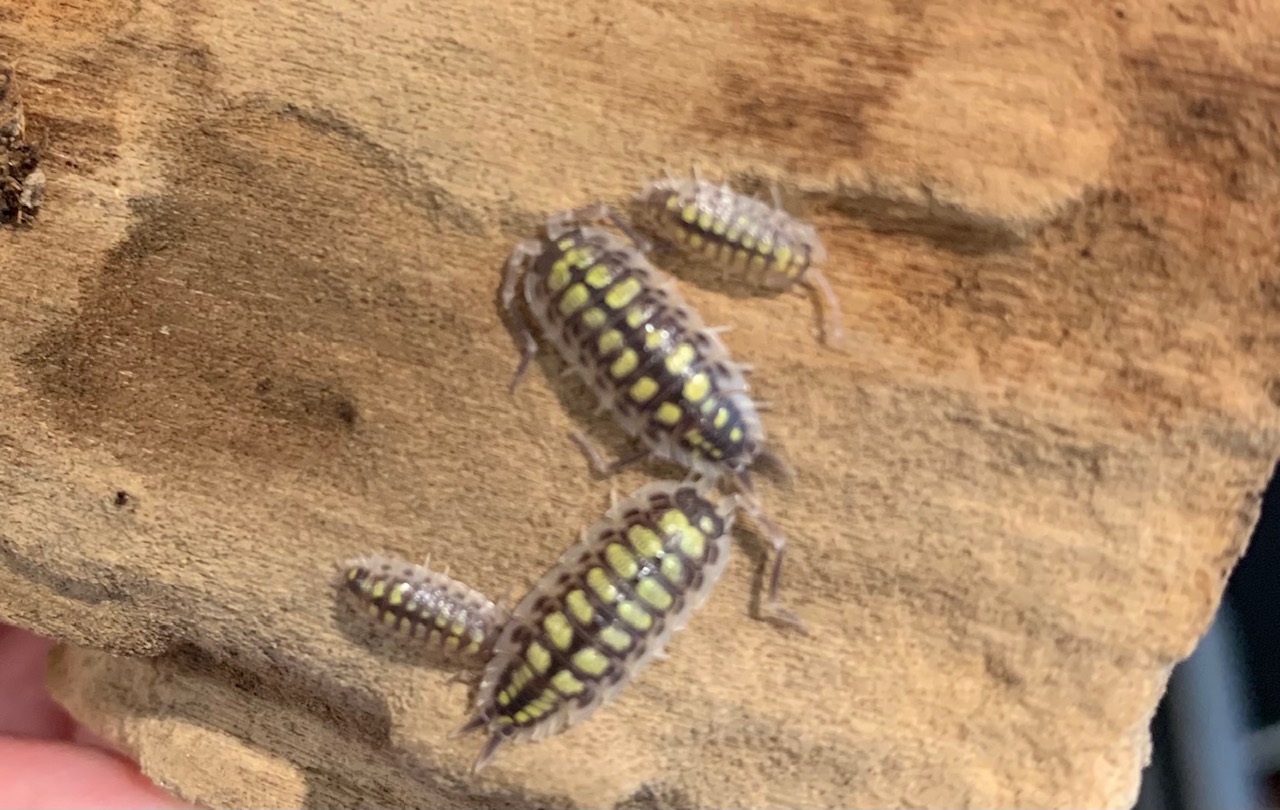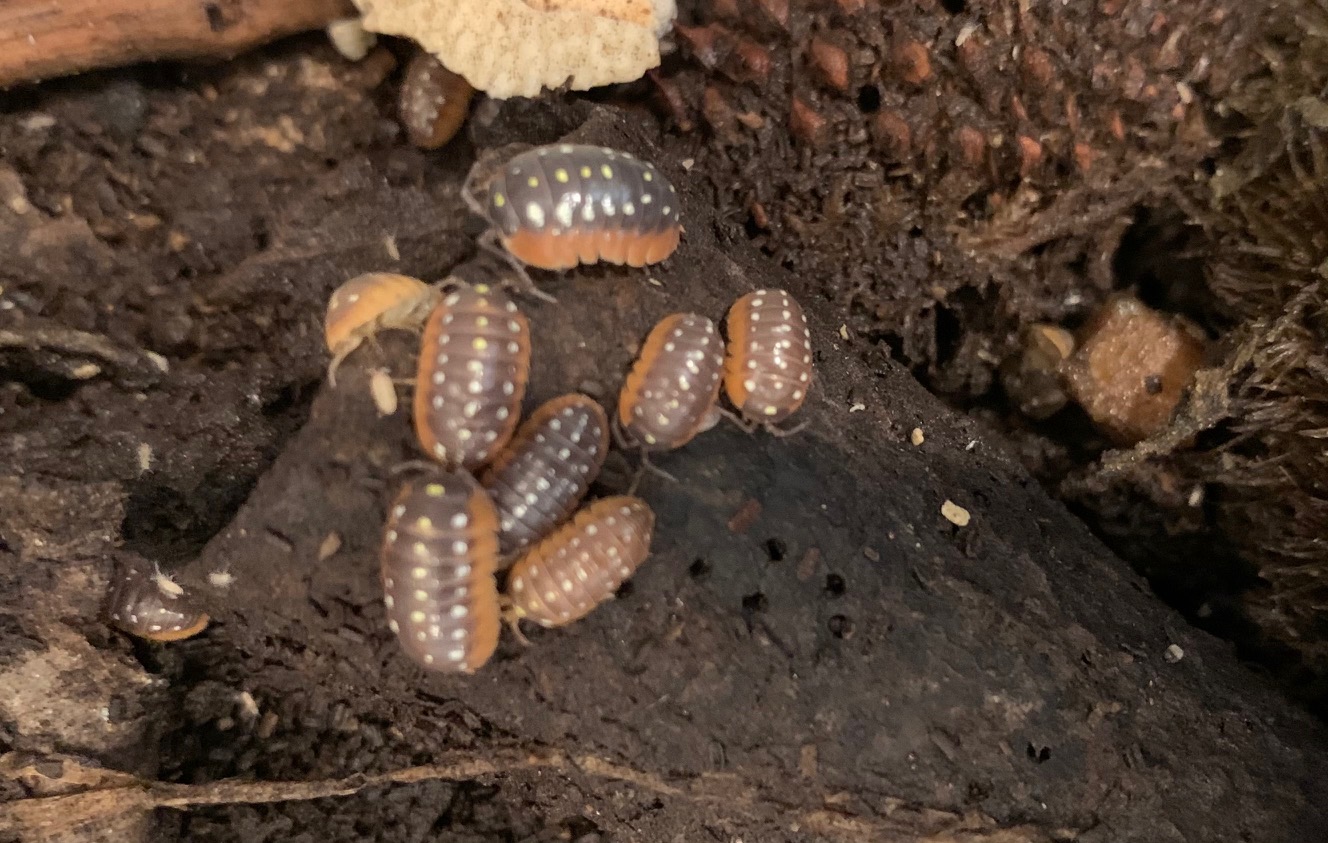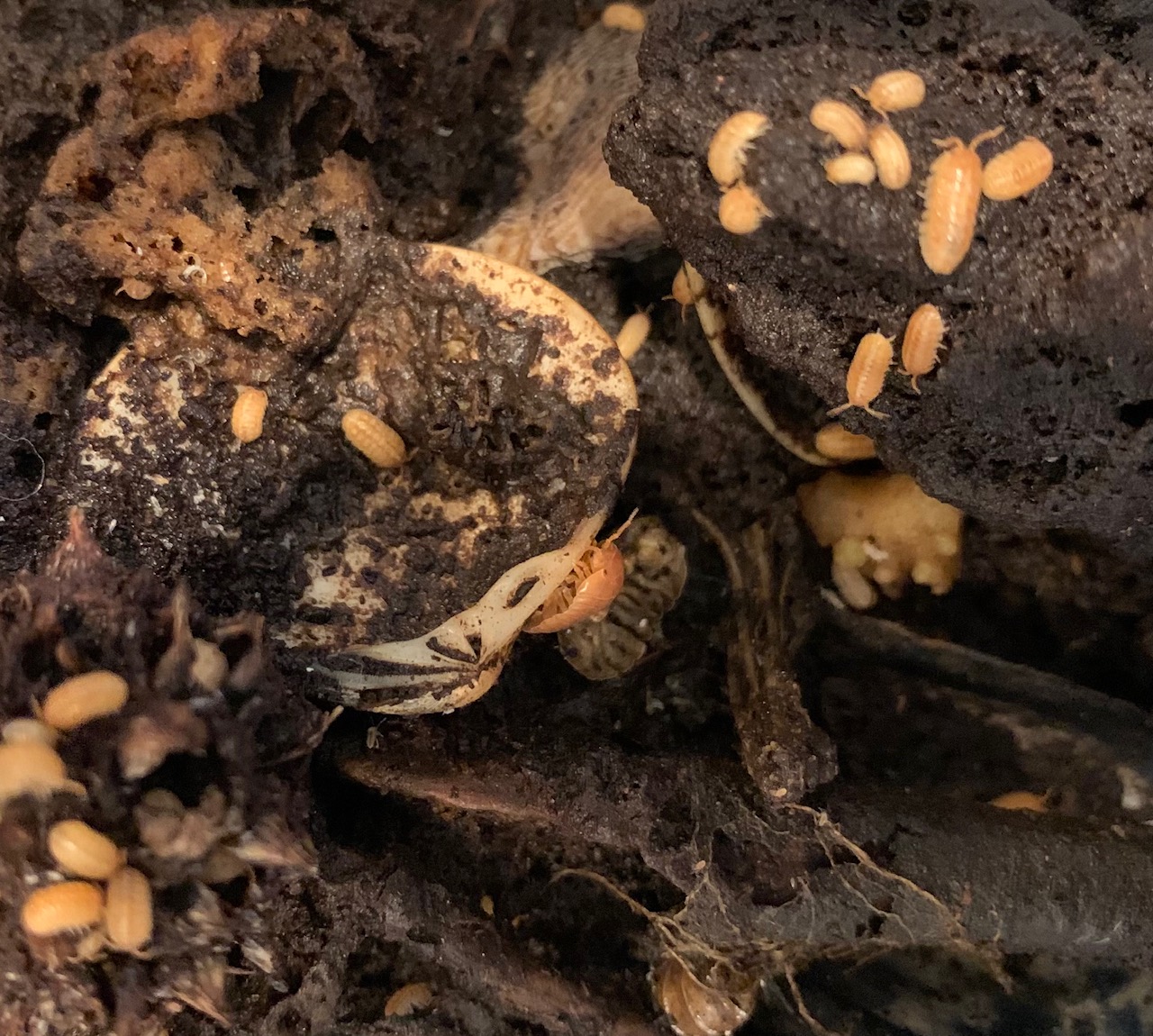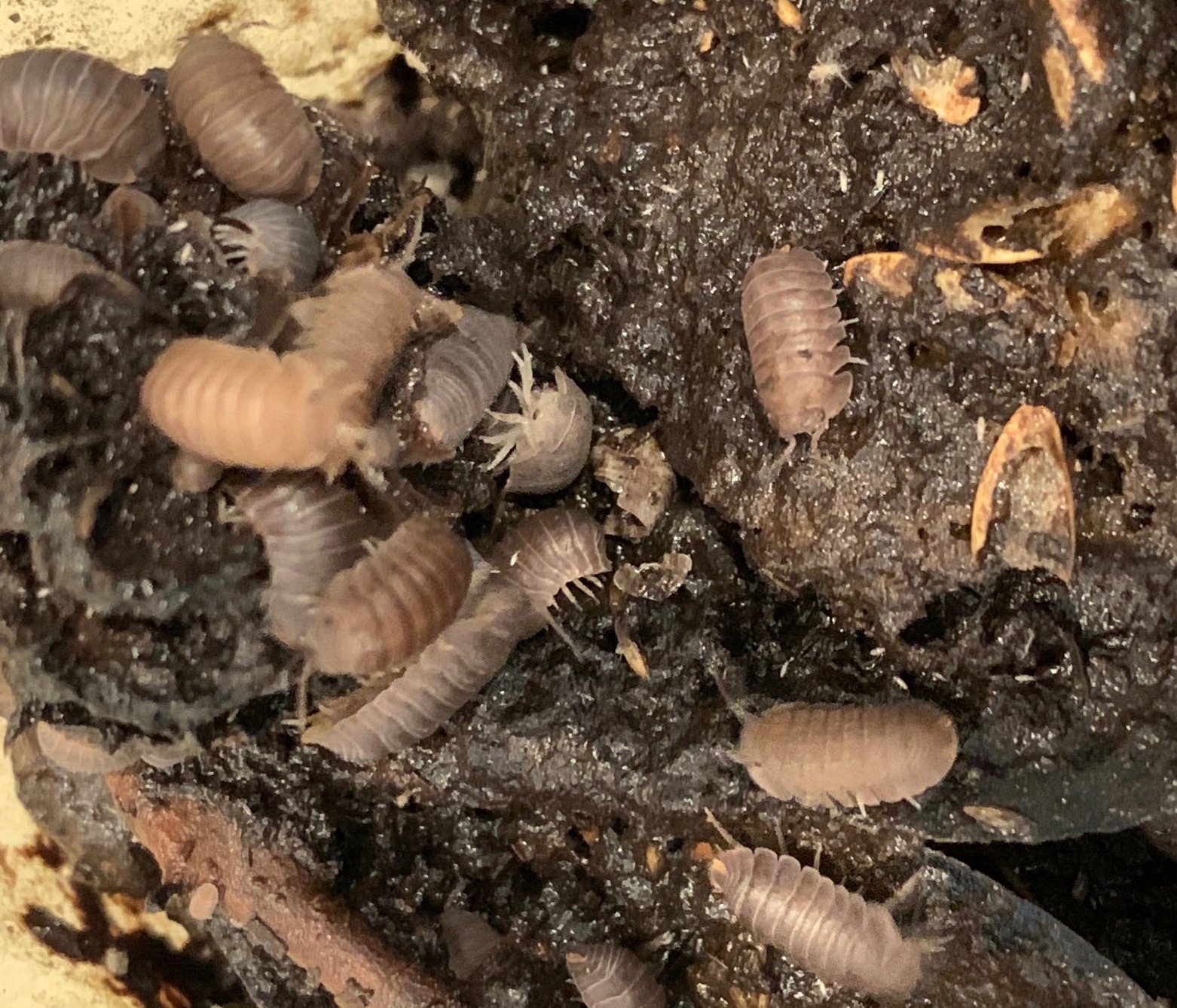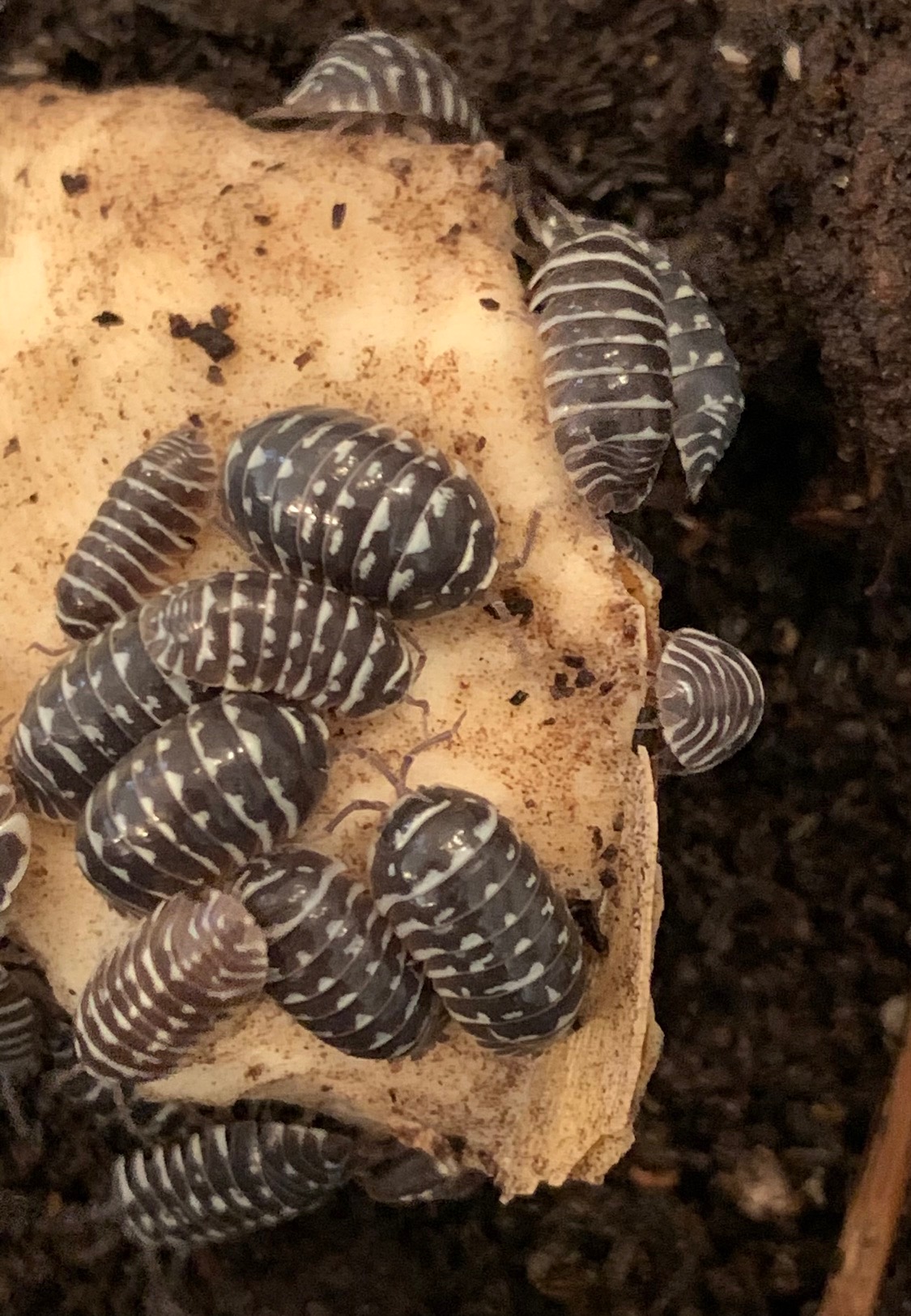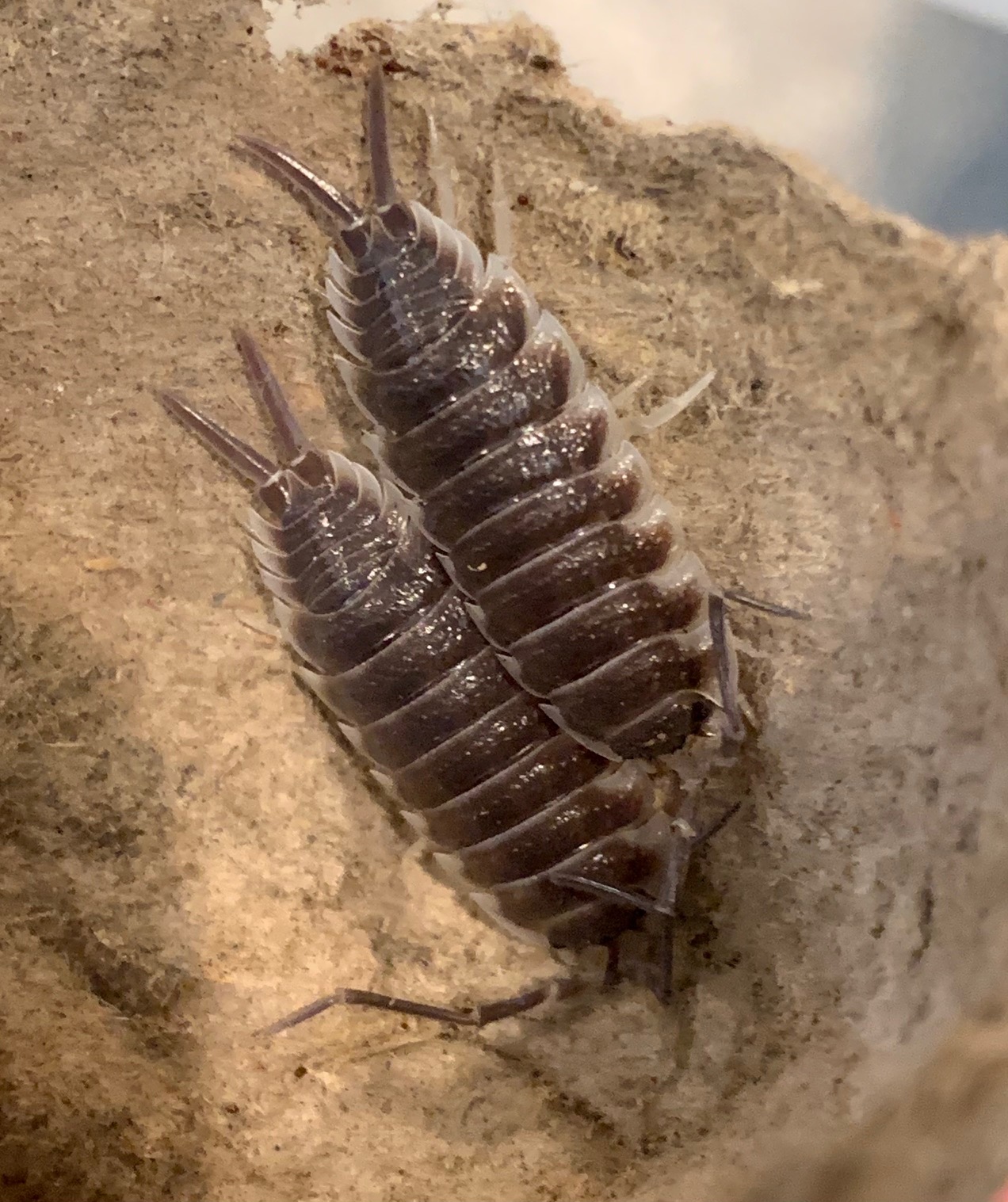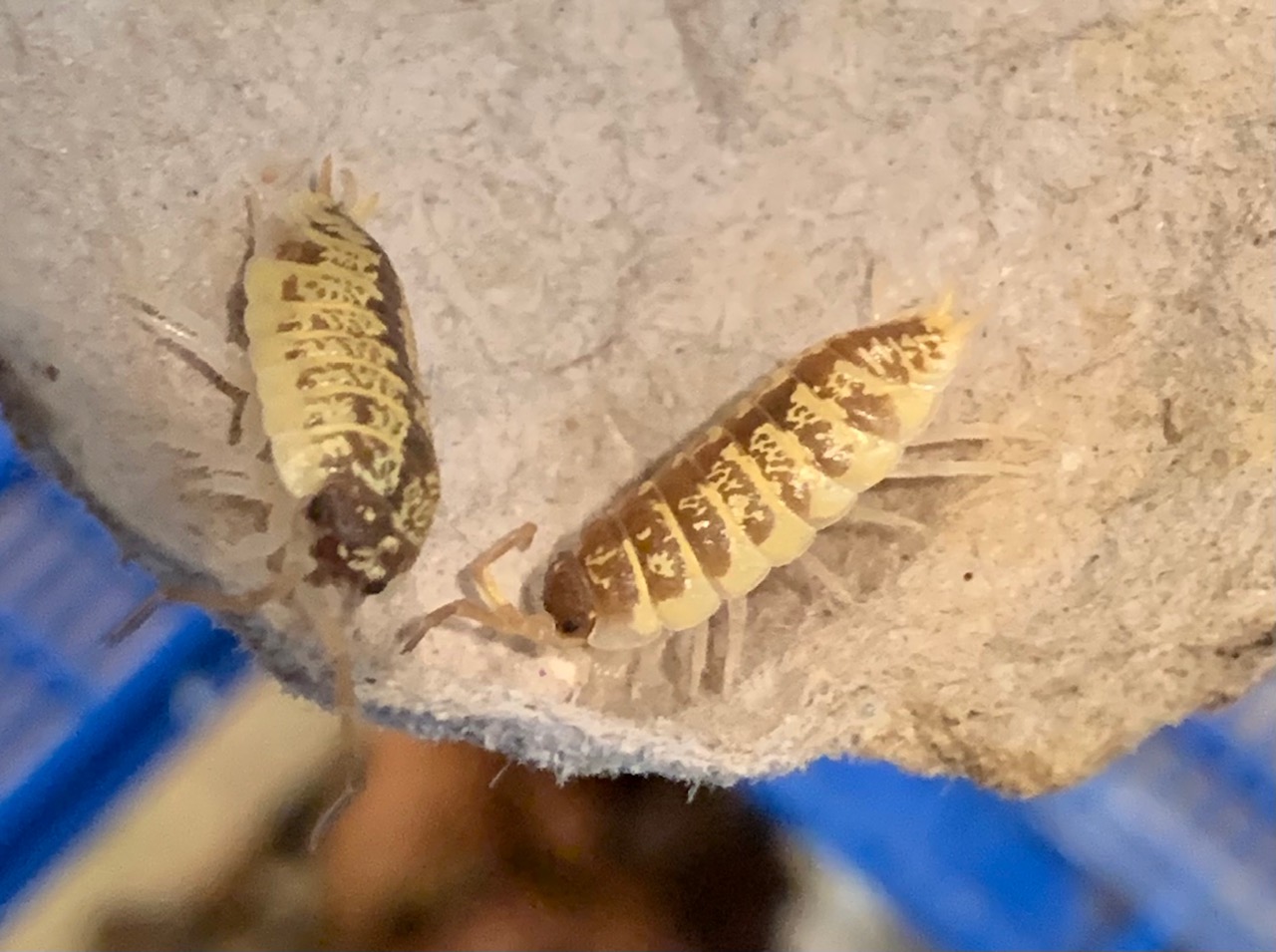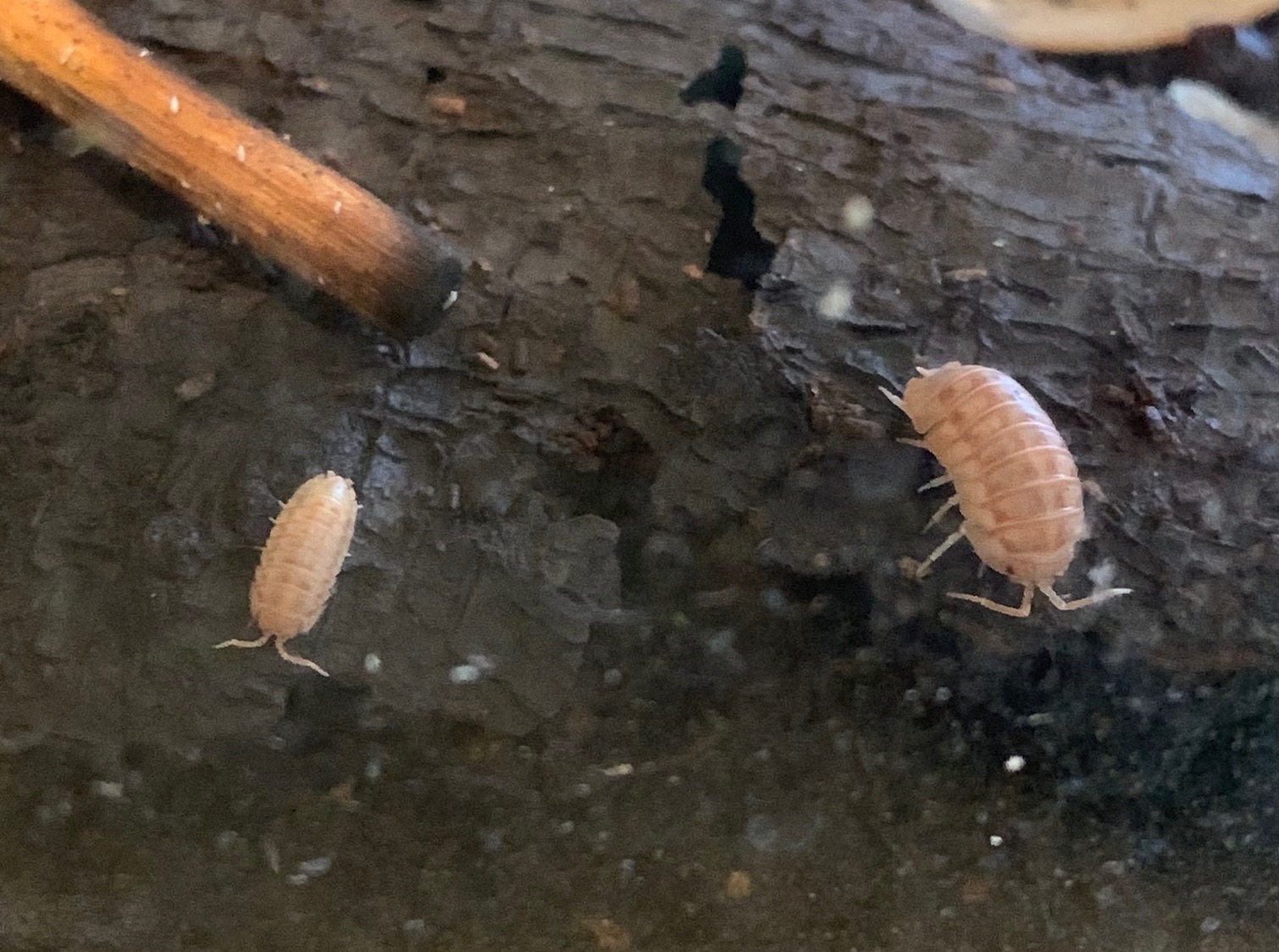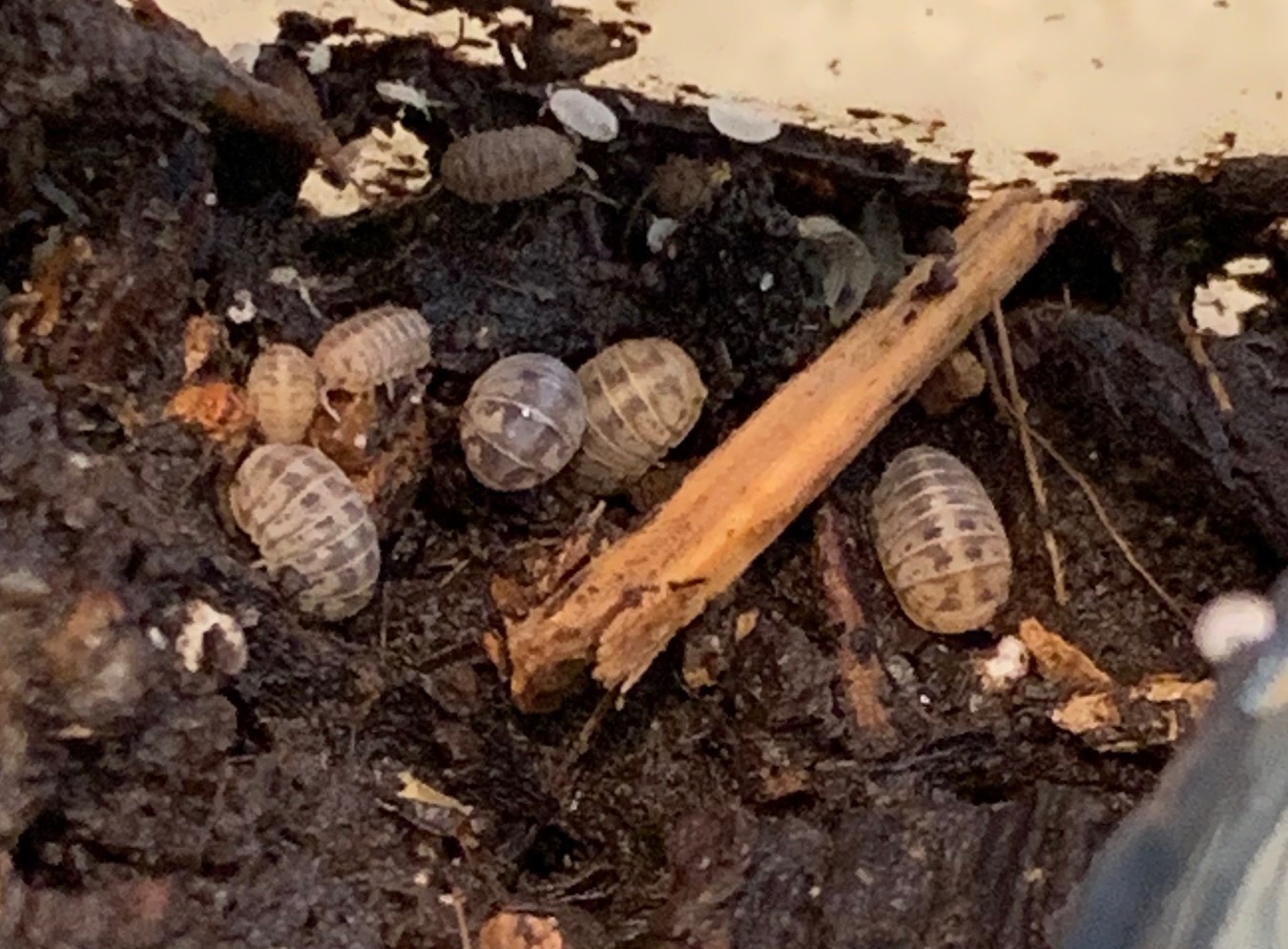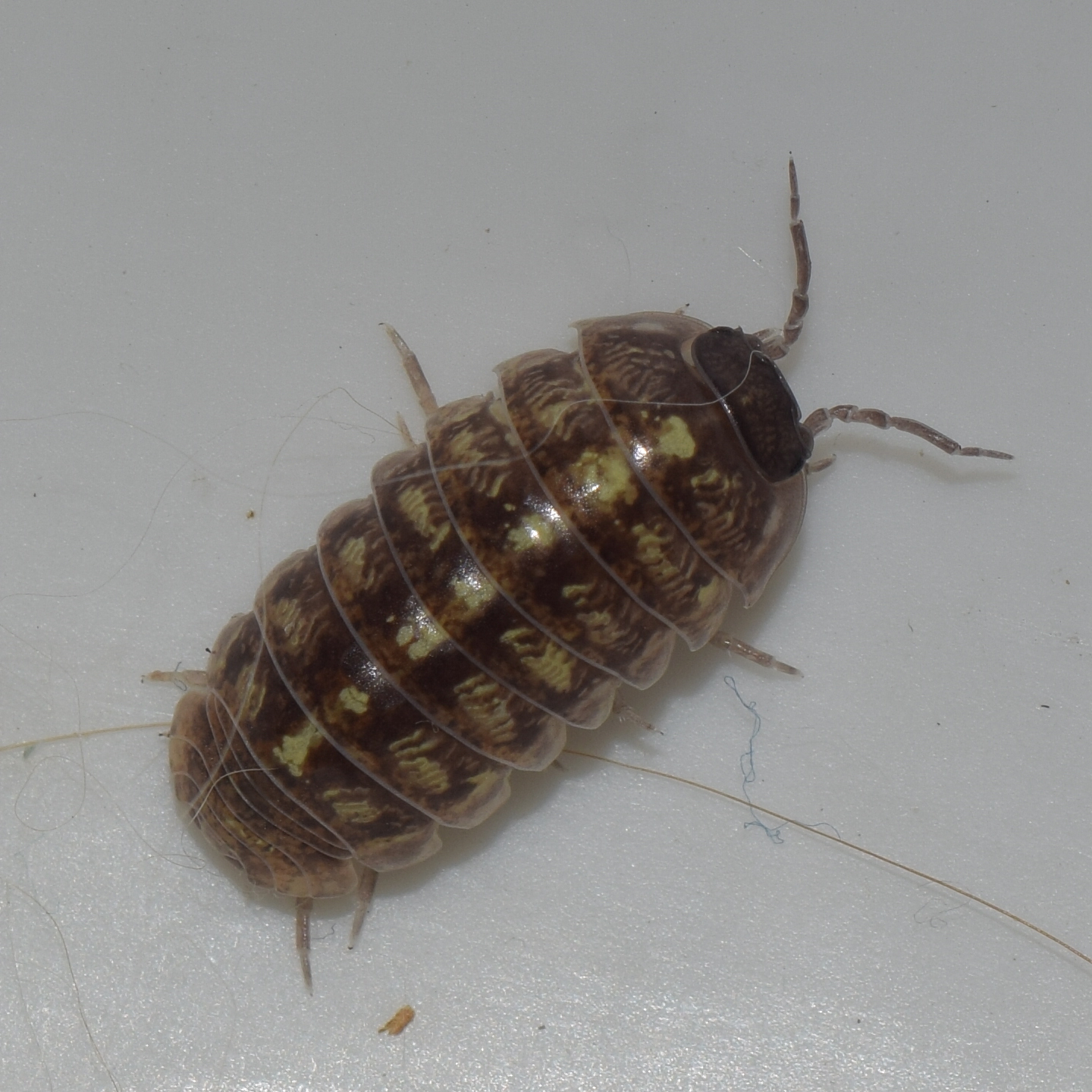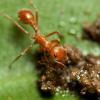I don't know how often I'll update this journal, but oh well, here are some isopods. Isopods are what got me started back into keeping small terrestrial arthropods (in 2019), which led me back to ants, which got me here.
I just took these photos today to show current status.
A note on some common genera of pet isopods (and we all know isopods are crustaceans, right?):
Armadillidium are the genus encompassing some of the most common pillbugs, the "roly poly" of toddler fame. They can roll up into a ball, some better than others.
Porcellio seem to fall into two general categories speaking purely in the pet trade: tough, protein-hungry Porcellio (e.g. laevis, scaber), and larger Spanish Porcellio ("giant Porcellio") who prefer dry conditions and are known for mate-guarding by males and some extra maternal care of mancae (such as keeping mancae (babies) in a hole and bringing food to them). While many isopod keepers have laevis and scaber, I don't have any (except for 1 stowaway scaber). I generally keep the larger Spanish variants, as below. Porcellio are not "pillbugs" as they cannot roll up. They are more in the "sowbug" category.
Cubaris are gaining fame for having many beautiful and unusual species, most without scientific names, and most hailing from Southeast Asia, and many having odd names like "rubbery ducky" "white tiger" "green laser" and so on. I don't have any of those (yet); I only have the very common, native-to-lots-of-places Cubaris murina. They came free with an order of something else. Cubaris are easily identifiable as they have little "tail lights" on their butts. They can roll up to some degree or other.
There are many other pet trade genera like Oniscus, Trichorhina (includes dwarf whites), Armadillo, Porcellionides (includes powder orange and powder blue), etc., but I don't have those. I do have Venezillo, which were, as with the Cubaris, a freebie.
Isopods should generally always be kept with springtails, who act as CUC (clean up crew) for them. Springtails eat moldy leftovers and are cute and harmless.
Keeping isopods is NOT like keeping ants; they are less maintenance, easier to feed (calcium, leaves, wood, occasional protein and vegetables), and IMHO are not quite as interesting to watch for long periods of time. It's more like watching sheep grazing. On the OTHER hand, they breed. You can get colonies of them with second, third generations thriving in basically a box of dirt, do line-breeding to isolate colors, and otherwise easily keep a box of colorful dirt shrimp year-round without the fuss and muss of ants. If you're observant you might observe parental care of mancae by some species, too.
Armadillidium granulatum. Underrated yellow-spotted isopods.
They had a huge population boom last year, but a sudden die-off recently. I think things got too dry for them. Some granulatum have very subtle, small yellow spots, but the ones I was sent happened to be bright and colorful. I like these more than the variants that have tiny spots (I mean, even the common A. vulgare can have some pretty spots).
Armadillidium gestroi. Native to Italy. Brilliant yellow spots contrasting with the darker carapace. If I had to keep just one Armadillidium, these are probably the ones I'd keep, just for the stunning colors.
Porcellio haasi. The colors are a bit like gestroi, but these are a Spanish Porcellio; they like dry conditions and are known to exhibit maternal care of mancae. These are fairly young.
Armadillidium klugii, the clown isopod. Once rare in the pet trade, these are famous for their colors. They are the reason many people started collecting isopods.
Armadillidium vulgare var. "Orange Vigor." Vulgare are one of the most common species in the world, having spread from their native Europe to backyards everywhere as the familiar grayish "roly poly" or "pillbug," and some have naturally occurring or line-bred variations, like these. These are mostly juveniles.
Cubaris murina. While many rare Cubaris such as rubber duckies have a fussy reputation, murina are native to the US and these guys are both TOUGH and prolific. Bonus: they can roll up. This photo does not show the signature Cubaris "tail lights" very well, but it's pretty unmistakable.
Armadillidium maculatum, the "zebra isopod." Newer variants with yellow striping or brown instead of black ("chocolate") are all the rage.
Porcellio hoffmannseggi. I accidentally killed off my first colony. These are two survivors from a smaller group of replacements. These newer ones are more mellow than the previous ones, but they are notoriously hard to breed. They generally breed only once or twice a year.
Porcellio ornatus "high yellow." P. ornatus are known for being active and not very shy, and these high yellow variants are more showy than typical ornatus.
Armadillidium nasatum "peach." These kind of peach-colored nasatum (normal nasatum are gray) are prolific and hardy and can be invasive.
Venezillo parvus. These are very small isopods that some say can work as CUC, much like dwarf white or dwarf purples. They are colorful, as seen here, and like their larger Armadillidium and Cubaris relatives, they can roll up. When I first got them I didn't see them for months. They are tiny and shy and it wasn't til the mancae grew up that I started seeing them on the surface, like these:
Edited by OhNoNotAgain, October 14 2020 - 2:19 PM.

